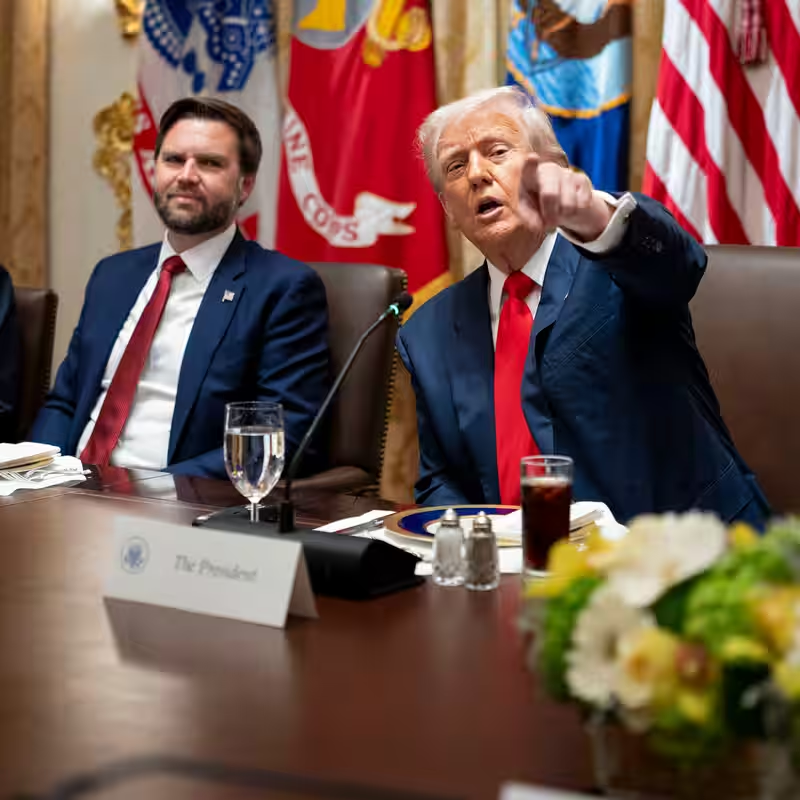Donald Trump’s first term in the White House was marked by chaos, controversy—and a surprising number of institutional constraints that kept his most extreme impulses in check. But his second term is revealing a stark new reality: those guardrails have largely disappeared.
From a Justice Department now led by loyalists who nod silently as he demands prosecutions of political enemies, to a hollowed-out civil service stripped of career professionals, the systems that once acted as brakes on presidential overreach have been systematically dismantled .
What Were the Original Guardrails?
During Trump’s first term (2017–2021), several key forces limited his ability to fully reshape the federal government in his image:
- Career civil servants who resisted politicization of agencies like the CDC and State Department.
- Independent-minded appointees like former Defense Secretary Jim Mattis and FBI Director James Comey, who pushed back—even at the cost of their jobs.
- Judicial oversight that blocked executive orders on immigration and emergency declarations.
- Internal DOJ norms that prevented the weaponization of federal law enforcement against political foes.
These weren’t perfect safeguards—but they created friction. That friction is now gone.
Trump’s Second Term: A System Rebuilt for Loyalty
In 2025, Trump has surrounded himself with officials who don’t just agree with him—they anticipate his wishes. Attorney General Pam Bondi, Deputy AG Todd Blanche, and FBI Director Kash Patel have all demonstrated unwavering allegiance, even when it means violating long-standing Justice Department protocols .
Meanwhile, mass layoffs during the government shutdown have purged thousands of experienced federal workers—especially from offices deemed “Democrat programs,” like the Office of Population Affairs, which oversaw contraception access for millions .
Then vs. Now: Key Differences in Trump’s Governance
| Area | First Term (2017–2021) | Second Term (2025–) |
|---|---|---|
| Justice Department | Resisted pressure to prosecute political enemies | Actively pursuing cases against Jack Smith, James Comey, Letitia James |
| Civil Service | Staffed by experienced career officials | Mass layoffs; replaced by political loyalists or left vacant |
| Hiring Policy | Merit-based with some political appointments | All hires require approval from Trump’s political appointees |
| Institutional Pushback | Common (e.g., Mattis resignation letter) | Virtually nonexistent |
The Cost of No Constraints
Without internal resistance, Trump’s agenda is moving faster—and more radically—than ever before. Recent actions include:
- Indicting former FBI Director James Comey at the president’s direct urging.
- Shutting down the federal birth control office, threatening care for 4 million women.
- Requiring job applicants to answer loyalty questions about Trump’s policies.
- Publicly naming individuals he wants prosecuted—while top law enforcement officials stand by and smile.
“This isn’t just about one policy or one firing,” said Norman Eisen, a former White House ethics lawyer. “It’s about the complete collapse of the separation between political power and neutral governance.”
Can the System Recover?
Experts warn that once norms are broken, they’re hard to restore. The civil service may take a generation to rebuild. Public trust in institutions like the FBI and DOJ is already eroding.
Yet history offers a glimmer of hope. After Watergate, reforms strengthened oversight. After the Patriot Act era, surveillance powers were reined in. Whether a similar correction happens after Trump’s second term may depend on how clearly Americans recognize what’s been lost.
For now, the message is clear: the guardrails didn’t just bend—they’ve been removed.




